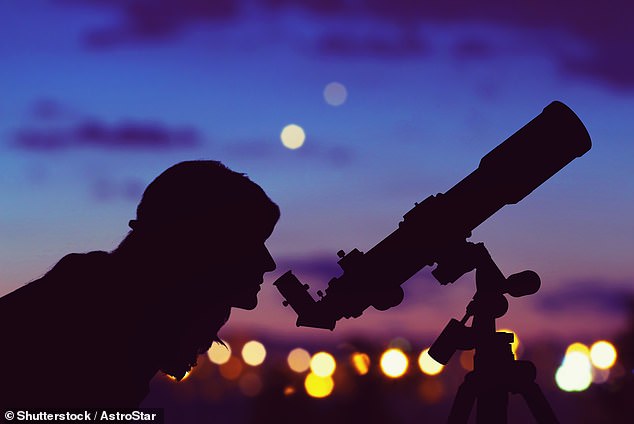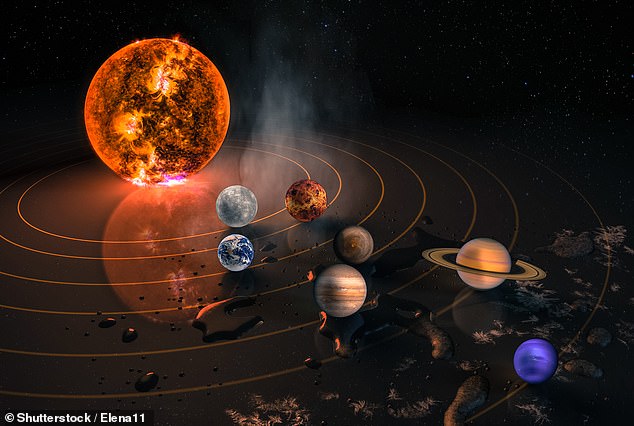How to see the ‘parade of planets’ in the night sky, where three planets and the moon are aligned
A parade of planets will be visible in the early morning US sky on Saturday, just a few weeks after a similar celestial event took place earlier this month.
Stargazers will be able to see Saturn, Mars and Jupiter with the naked eye and although Uranus and Neptune will not be part of the alignment, they will still be visible in the sky.
The best time to view the alignment is about 30 minutes before sunrise and in rural areas, away from light pollution and with a clear view of the horizon.
The latest event took place in the early hours of June 3, featuring Mercury, Mars, Jupiter, Saturn, Uranus and Neptune.
The planets move through the plane at different speeds and as the days pass they eventually overtake each other so that they appear to be on the same path

Stargazers can see Saturn, Mars and Jupiter with the naked eye and although Uranus and Neptune are not part of the alignment they will still be visible in the sky, but viewers will likely need high-power binoculars or a telescope to see to see them.
The planetary alignment occurs at different times depending on your location. To determine what time to go outside, first figure out when sunrise begins and look at the sky an hour beforehand.
Jupiter appears as the bright planet about 10 degrees above the horizon, forming a line with Mars and Saturn extending south.
The planets move through the plane at different speeds and as the days pass, they eventually catch up to each other, making it appear as if they are aligned on the same path.
Because they move at different speeds, the alignment will only last for a short time and will not be perfectly straight, despite looking straight from Earth.
Unlike the previous event, which saw six worlds align, Saturday’s event is being considered a mini-planetary alignment.

Saturday morning, four planets will be in alignment in the sky, including Saturn, Mars and Jupiter
If you’re worried about confusing the planets and stars and missing their alignment, you can download apps that will show you exactly where they are in the sky.
One such app is Sky Tonight, which allows you to find planets by pointing your phone at the sky. The app will then recognize which stars or planets you see.
Stellarium is another useful online tool to help plan where to look in the early morning hours, making the hunt for the celestial parade much easier.
You’ll still need a good telescope and even better weather to spot all four planets in one morning, but don’t despair if you can’t.
“You worry that planetary alignments are rare, but honestly we get one every few years,” Bill Cooke, head of NASA’s Meteoroid Environment Office, said. ABC news until 2023.
The next event is a major alignment of Mercury, Mars, Jupiter, Uranus, Neptune and Saturn on August 28.
